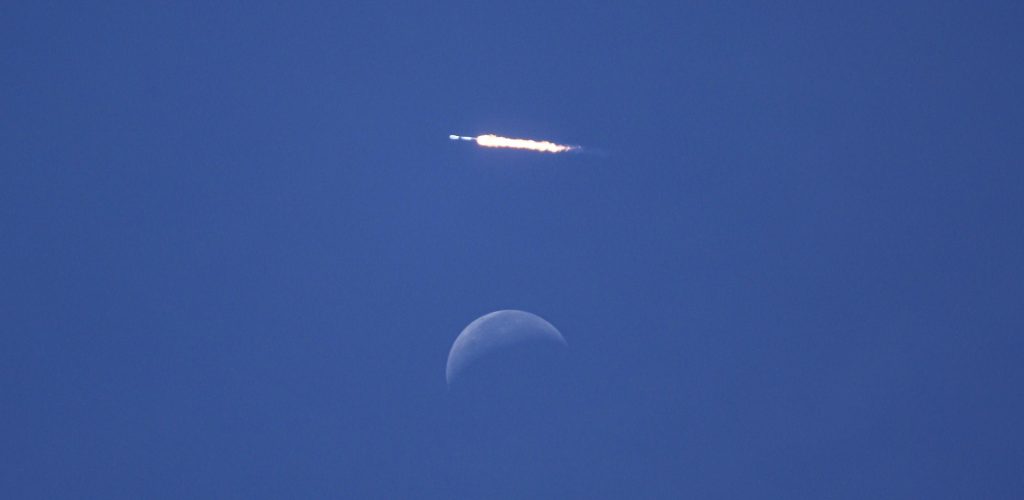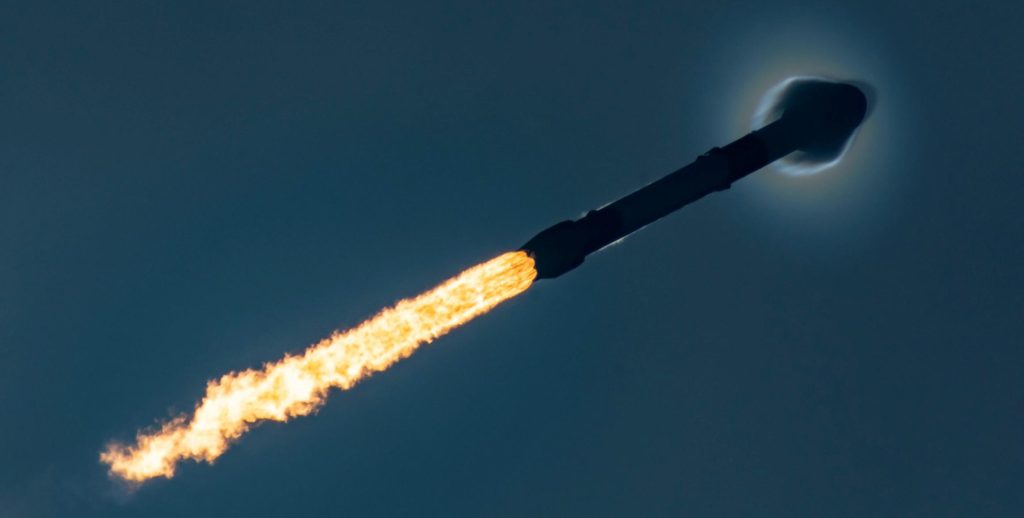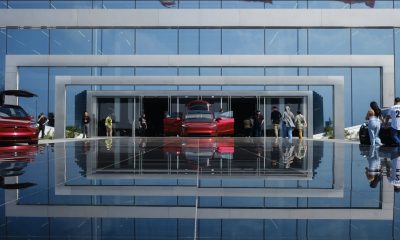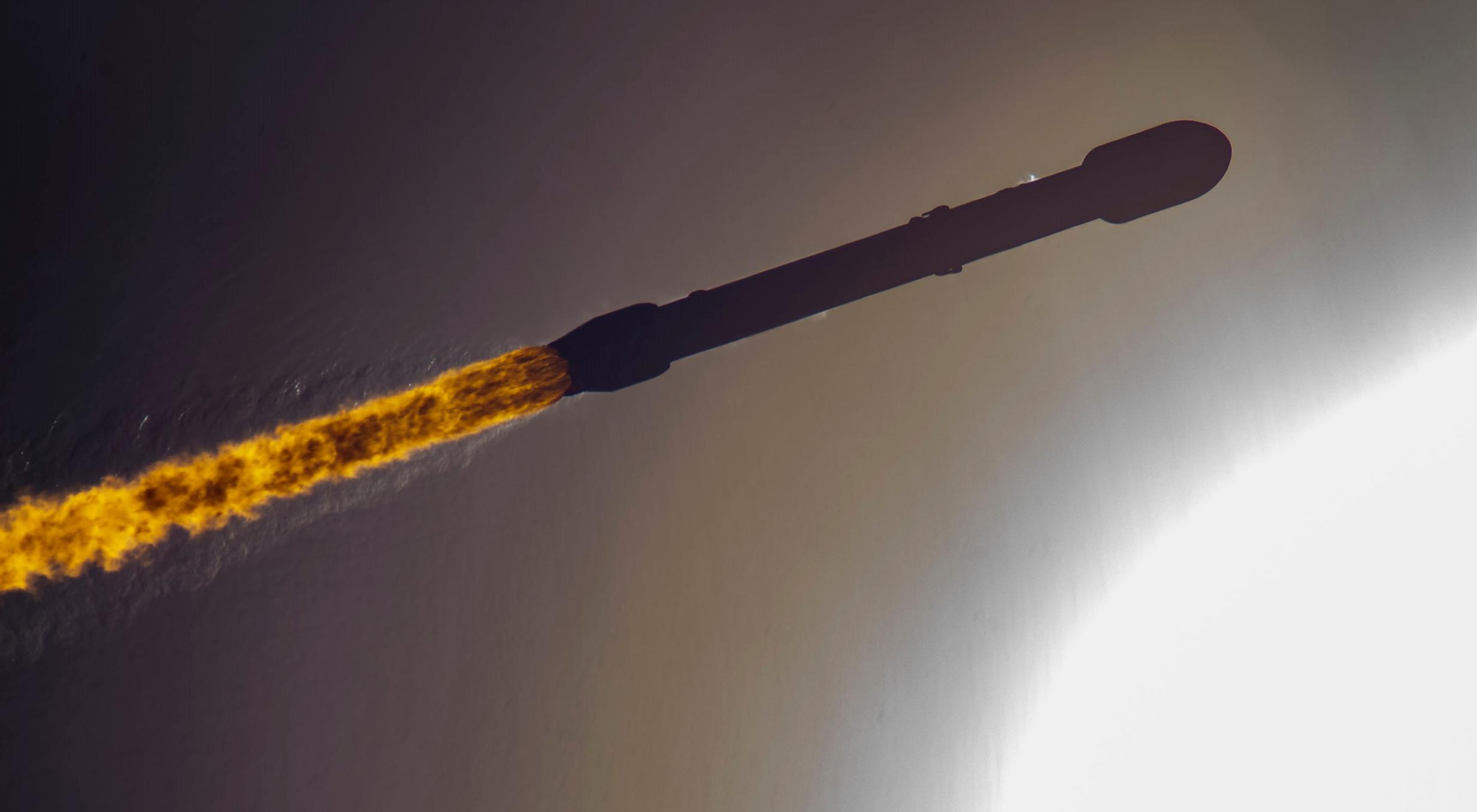SpaceX has rounded out its busiest July ever with a pair of Falcon 9 Starlink launches, simultaneously breaking its annual launch record less than seven full months into 2022.
The company has now completed six launches – five of which were Starlink missions – this month. The last two missions launched about 44 hours apart from opposite coasts of the United States – Starlink 3-2 from California’s Vandenberg Space Force Base (VSFB) on July 22nd and Starlink 4-25 from Florida’s Kennedy Space Center (KSC) on the 24th. Both Falcon 9 fairings and boosters were reused, as is now the norm. Both boosters also landed without issue, extending SpaceX’s record of consecutively successful landings to 59.
From the West Coast, booster B1071 helped launch 46 Starlink V1.5 satellites into a sun-synchronous (semi-polar) orbit. On the East Coast, Falcon B1062 sent 53 more Starlink V1.5 satellites on their way to a more equatorial orbit for its third Starlink mission overall.


All told, SpaceX managed to launch five batches of Starlink satellites and a Cargo Dragon spacecraft to the International Space Station between July 7th and July 24th – six Falcon 9 launches in 17 days. It’s the third time SpaceX has completed six launches in the same calendar month, but the first time the company has completed six launches in less than three weeks. The fact that Falcon 9’s launch cadence has come to feel so routine so quickly is nothing less than a testament to SpaceX’s excellence, as only one other rocket in the 65-year history of orbital spaceflight (the Soviet ‘Soyuz-U’) can still claim to have launched more in such a short period.
In fact, as previously reported, SpaceX itself is already making six launches in one calendar month seem ordinary. The company managed eight successful Falcon 9 launches in 30 days between June 17th and July 17th – narrowly falling short of Soyuz-U, which completed eight launches in less than 28 days in 1980.
What SpaceX can lay claim to with certainty, however, is consistently launching more satellites in short periods of time than any other country, agency, or company in history. In July, SpaceX launched 251 Starlink satellites, expanding its immense constellation by ~10%. SpaceX completed five Starlink missions in less than 30 days twice before, in May 2021 and 2022, with the former accounting for a record 292 Starlink satellites. Including non-Starlink payloads, SpaceX has technically launched 323 satellites in 27 days.
According to astrophysicist Jonathan McDowell, who independently monitors SpaceX’s satellites, 2665 working Starlink satellites are now in orbit, 2155 of which have reached operational orbits. 451 Starlink V1.5 satellites – all launched since April 2022 – are still in the process of raising their orbits and should be ready to join the operational constellation within a few weeks to three months.
Finally, Starlink 3-2 (July 22nd) was SpaceX’s 32nd launch of 2022, breaking its annual record of 31 launches (set in 2021) just 55% of the way into the new year. Every Falcon launch between now and the start of 2023 will set a new SpaceX record, which stands at 33 launches after Starlink 4-25. The company reportedly has up to seven Falcon 9 launches scheduled in August 2022.
News
Tesla sales soar in Norway with new Model Y leading the charge
Tesla recorded a 54% year-over-year jump in new vehicle registrations in June.

Tesla is seeing strong momentum in Norway, with sales of the new Model Y helping the company maintain dominance in one of the world’s most electric vehicle-friendly markets.
Model Y upgrades and consumer preferences
According to the Norwegian Road Federation (OFV), Tesla recorded a 54% year-over-year jump in new vehicle registrations in June. The Model Y led the charge, posting a 115% increase compared to the same period last year. Tesla Norway’s growth was even more notable in May, with sales surging a whopping 213%, as noted in a CNBC report.
Christina Bu, secretary general of the Norwegian EV Association (NEVA), stated that Tesla’s strong market performance was partly due to the updated Model Y, which is really just a good car, period.
“I think it just has to do with the fact that they deliver a car which has quite a lot of value for money and is what Norwegians need. What Norwegians need, a large luggage space, all wheel drive, and a tow hitch, high ground clearance as well. In addition, quite good digital solutions which people have gotten used to, and also a charging network,” she said.
Tesla in Europe
Tesla’s success in Norway is supported by long-standing government incentives for EV adoption, including exemptions from VAT, road toll discounts, and access to bus lanes. Public and home charging infrastructure is also widely available, making the EV ownership experience in the country very convenient.
Tesla’s performance in Europe is still a mixed bag, with markets like Germany and France still seeing declines in recent months. In areas such as Norway, Spain, and Portugal, however, Tesla’s new car registrations are rising. Spain’s sales rose 61% and Portugal’s sales rose 7% last month. This suggests that regional demand may be stabilizing or rebounding in pockets of Europe.
News
Tesla to open first India experience center in Mumbai on July 15
The event is scheduled for July 15 at the Bandra Kurla Complex, a premier business district in Mumbai.

Tesla is officially entering India with the opening of its first showroom and experience center in Mumbai next week. The event is scheduled for July 15 at the Bandra Kurla Complex, a premier business district in Mumbai.
Tesla imports to India signal an early-stage market entry strategy
According to Indian customs data, Tesla has imported approximately $1 million worth of vehicles, charging equipment, and merchandise into the country between January and June. The shipments include six Model Y comprised of five standard variants valued at $32,500 each and one long-range model valued at $46,000. Several Superchargers and related accessories were also imported into the country, as noted in a Yahoo Finance report.
These vehicles are expected to serve as display models and test units as Tesla gauges interest and navigates India’s high import duties, which hover around 70% on fully built vehicles. Despite the significant tariffs in the country, Tesla has opted to begin its India expansion with imported cars.
An invitation to the Tesla India launch event has been making the rounds online. As could be seen in the document, Tesla noted that July 15 would be the launch of Tesla in India through the opening of a Tesla experience centre at Bandra Kurla Complex in Mumbai.
Tesla India’s hiring and expansion efforts are underway
Tesla has filled a number of key roles from the 30+ positions it advertised earlier this year. Recent hires include store managers, service executives, and sales staff, while ongoing recruitment is focused on supply chain engineers and vehicle operators to support the company’s Autopilot program.
Indian officials have been open about their intention to encourage Tesla to establish a manufacturing hub in the country. Tesla does seem open to the idea, at least, with reports last year hinting that Elon Musk was set to visit the country to discuss or even potentially announce a domestic project. The trip, however, was ultimately canceled.
News
Tesla begins Robotaxi certification push in Arizona: report
Tesla seems serious about expanding its Robotaxi service to several states in the coming months.

Tesla has initiated discussions with Arizona transportation regulators to certify its driverless Robotaxi service in the state, as per a recent report from Bloomberg News. The move follows Tesla’s launch of its Robotaxi pilot program in Austin, Texas, as well as CEO Elon Musk’s recent comments about the service’s expansion in the Bay Area.
The Arizona Department of Transportation confirmed to Bloomberg that Tesla has reached out to begin the certification process for autonomous ride-sharing operations in the state. While details remain limited, the outreach suggests that Tesla is serious about expanding its driverless Robotaxi service to several territories in the coming months.
The Arizona development comes as Tesla prepares to expand its service area in Austin this weekend, as per CEO Elon Musk in a post on X. Musk also stated that Tesla is targeting the San Francisco Bay Area as its next major market, with a potential launch “in a month or two,” pending regulatory approvals.
Tesla first launched its autonomous ride-hailing program on June 22 in Austin with a small fleet of Model Y vehicles, accompanied by a Tesla employee in the passenger seat to monitor safety. While still classified as a test, Musk has said the program will expand to about 1,000 vehicles in the coming months. Tesla will later upgrade its Robotaxi fleet with the Cyercab, a two-seater that is designed without a steering wheel.
Sightings of Cybercab castings around the Giga Texas complex suggests that Tesla may be ramping the initial trial production of the self-driving two-seater. Tesla, for its part, has noted in the past that volume production of the Cybercab is expected to start sometime next year.
In California, Tesla has already applied for a transportation charter-party carrier permit from the state’s Public Utilities Commission. The company is reportedly taking a phased approach to operating in California, with the Robotaxi service starting with pre-arranged rides for employees in vehicles with safety drivers.
-

 Elon Musk2 weeks ago
Elon Musk2 weeks agoTesla investors will be shocked by Jim Cramer’s latest assessment
-

 Elon Musk1 day ago
Elon Musk1 day agoxAI launches Grok 4 with new $300/month SuperGrok Heavy subscription
-

 Elon Musk3 days ago
Elon Musk3 days agoElon Musk confirms Grok 4 launch on July 9 with livestream event
-

 News1 week ago
News1 week agoTesla Model 3 ranks as the safest new car in Europe for 2025, per Euro NCAP tests
-

 Elon Musk2 weeks ago
Elon Musk2 weeks agoA Tesla just delivered itself to a customer autonomously, Elon Musk confirms
-

 Elon Musk1 week ago
Elon Musk1 week agoxAI’s Memphis data center receives air permit despite community criticism
-

 News2 weeks ago
News2 weeks agoXiaomi CEO congratulates Tesla on first FSD delivery: “We have to continue learning!”
-

 Elon Musk2 weeks ago
Elon Musk2 weeks agoTesla still has two major milestones on track before end of Q2


















